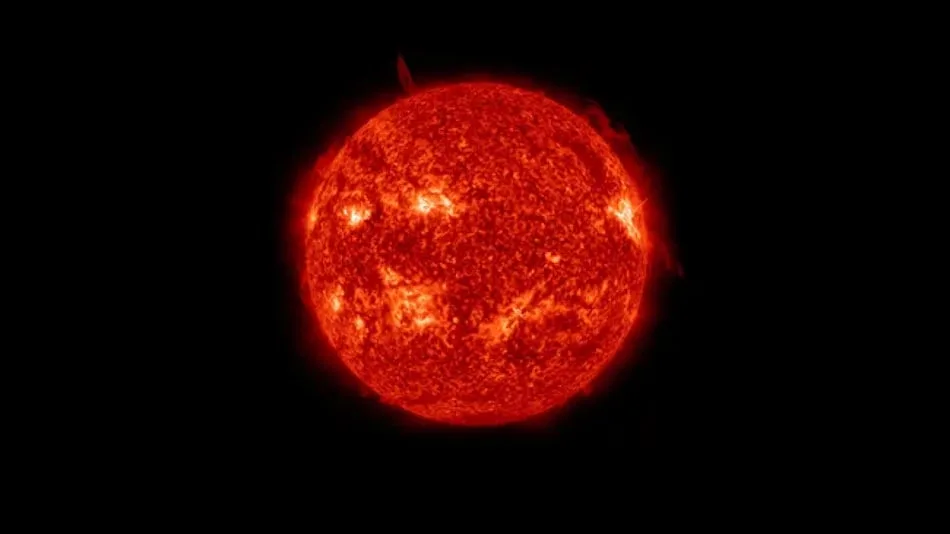Table of Contents
Sun’s Magnetic Activity Is Making It Difficult to Gauge Its True Age, Study Finds
New research uncovers how the Sun's magnetic activity disrupts age measurements, raising concerns for future star studies and space missions.

Photo Credit: NASA
The discrepancy is attributed to variations in the Sun's magnetic activity
Highlights
- Sun’s magnetic activity causes discrepancies in its age measurements
- Findings could affect how we measure the age of more active stars
- PLATO and past missions like Kepler may need adjustments for accuracy
Astronomers have traditionally relied on helioseismology to estimate the Sun's age by analysing the vibrations that ripple through its interior. However, recent research has uncovered a significant obstacle, the Sun's magnetic activity, which follows an 11-year cycle, appears to be distorting these measurements. Data from the Birmingham Solar Oscillations Network (BISON) and NASA's SOHO mission, which spans over 26.5 years, revealed a 6.5 percent difference in the Sun's age when measured at the solar minimum compared to the solar maximum.
This discrepancy, attributed to variations in the Sun's magnetic activity, suggests that similar methods used to measure the age of other stars might also be affected, particularly those with more intense magnetic fields.
How Magnetic Activity Alters Solar Age Perceptions
The Sun’s magnetic activity, which alternates between solar minimum and maximum, is more influential than previously thought, according to a research paper published in the Astronomy & Astrophysics journal. During periods of high magnetic activity, the oscillations within the Sun—detected by instruments like BISON and GOLF (Global Oscillations at Low Frequency)—produce results that indicate a younger Sun than during times of low magnetic activity.
- New Study Reveals the Brain Stores Multiple Copies of Every Memory
These oscillations, caused by internal waves within the Sun, change the luminosity and surface movements, allowing scientists to infer details about the Sun's internal structure and, theoretically, its age. However, the unexpected influence of magnetic activity on these measurements challenges the long-held assumption that such activity should have little impact on helioseismology.
Challenges for Future Stellar Observations
The implications of this discovery extend beyond our Sun. As scientists prepare for the European Space Agency’s upcoming PLATO mission, which is set to launch in 2026, they must now consider the impact of magnetic activity when measuring the age, mass, and radius of distant stars. PLATO aims to detect dips in starlight caused by both transiting exoplanets and asteroseismic oscillations, similar to those observed in the Sun.
- Fastest Microscope Captures Electron Motion with Unprecedented Precision
- Nobody Can Identify the Viking Age Stone Figurine Found in Iceland
If magnetic activity significantly alters these measurements, as seen with the Sun, it could necessitate a reevaluation of past data from missions like NASA's Kepler Space Telescope. This revelation poses a "looming challenge" for the future of asteroseismology, requiring new methods to ensure accurate measurements of stellar ages, especially for more magnetically active stars.

